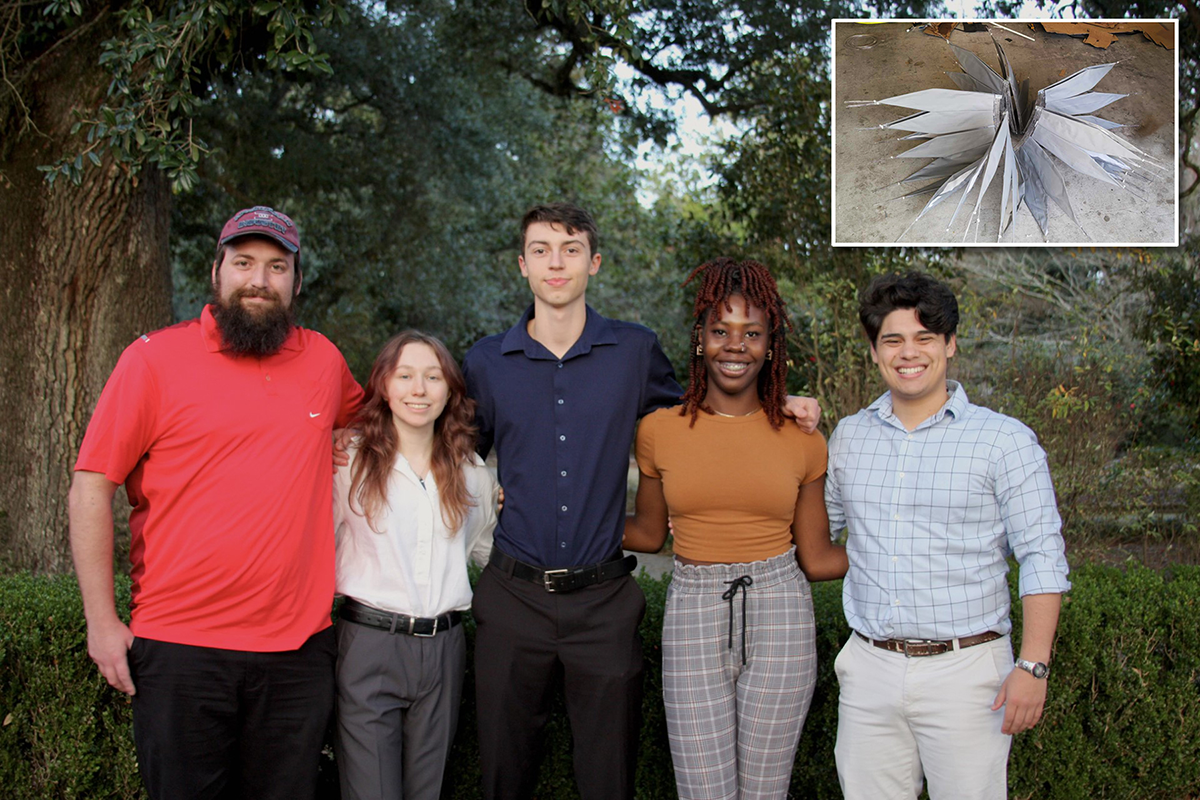A team of University of Louisiana at Lafayette students designed and built a flower-shaped structure that’s caught the eye of NASA. The reason? Its potential to enhance scientific observation of planets outside Earth’s solar system.
The five-member team’s small-scale starshade - coupled with extensive documentation about its construction and capabilities - placed third in NASA’s recent Hybrid Observatory for Earth-like Exoplanets Starshade Challenge. The strong finish brought the team a $4,000 award that will help further its research.
The challenge was built around a NASA initiative to study the concept of “hybrid observatories,” where some of the world’s most powerful ground-based telescopes would work in tandem with orbiting starshades. When strategically aligned with such telescopes, starshades would increase scientists’ ability to detect and study exoplanets, or those outside Earth’s solar system.
Observing such planets among a sea of brighter stars is extremely difficult. Once deployed in space, however, starshades cast shadows over stars without blocking the light of their planets.
“The light from stars obscures what scientists actually want to see, so starshades block surrounding light and allow observation of what’s at their center,” explained Dr. Michalis Charilaou, an assistant professor in the Department of Physics. Charilaou is the team’s adviser.
Competitions such as NASA’s starshade challenge give college and university students chances to conduct space-related research. NASA benefits, too. Student concepts and designs assist and inform NASA technology development.
In this case, the space agency is developing lightweight, yet stable starshades that are large enough – about 100 meters in diameter – to perform capably, yet constructed so as to be able to be compactly stowed aboard rockets and launched into space.
“NASA wants to make bigger starshades and is extrapolating existing designs for smaller starshades and scaling them up,” explained physics major David Silva, the UL Lafayette team’s student leader.
The interdisciplinary team produced the Gas Inflated Rigid Starshade, which features an innovative inflatable truss system designed for several purposes. It serves as a deployment mechanism that supports a lightweight, yet rigid structure that “folds up” inside a cylinder-like container during transport.
Such capabilities are important, Silva explained. Until starshades that can be aligned with ground-based telescopes are developed, observing planets outside the Earth’s solar system will be like “trying to look at a speck of dust with a flashlight in your eyes,” he said.
Along with Silva, team members for the University’s starshade project are Drew Davis, a geology major; Landon Degeytaire, a mechanical engineering major; Harley Hardy, a physics major; and Brianna Olalekan, a physics major.
The team’s collaboration on the starshade initiative was coordinated by the Society of Physics Students. Charilaou is the campus organization’s faculty adviser. Dr. Yasmeen Qudsi, a mechanical engineering instructor, also mentored students as the starshade project’s co-adviser.
Photo caption: The UL Lafayette student team of, from left, Harley Hardy; Drew Davis; Landon Degeytaire; Brianna Olalekan; David Silva have designed and built a structure with potential to the enhance scientific study of planets. The interdisciplinary team placed third in NASA’s recent Hybrid Observatory for Earth-like Exoplanets Starshade Challenge. Submitted photo
